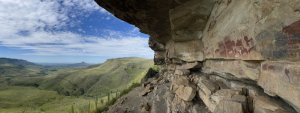Presented By: Museum of Anthropological Archaeology
Becoming elands’ people: Neoglacial subsistence and spiritual transformations in southern Africa's Maloti-Drakensberg Mountains
Brian Stewart: Associate Professor of Anthropology, and Associate Curator, UMMAA

Recent improvements in dating rock art offer unprecedented opportunities to integrate it with the excavated record. Deeply contextualized insights into how ancient peoples perceived their worlds can result. In southern Africa’s most richly painted area – the Maloti-Drakensberg Mountains – spectacular images were being made just as the region experienced dynamic changes owing in part to climate. Responses of local foragers are evident across a range of cultural spheres, including dramatic subsistence transformations. Here I explore how such changes articulated with ontological shifts in relation to the food quest. As desirable game declined and hunting windows narrowed, I suggest that Neoglacial (∼3.5–2 kcal BP) foragers sought to manage scheduling and social conflicts through enhanced spiritual negotiation with non-human entities in the landscape. Facilitated by the supernaturally charged nature of their elevated cosmos, this intensified spiritual labor found material expression, I argue, in an elaborate new style of painting. Where possible, adopting emic perspectives rooted in what I call "ecological ontology” is fundamental for decoding past hunter-gatherer lifeways.